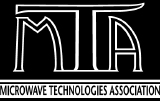Microwave Facts
 |
How do microwaves heat
food?
|
| |
Microwave energy is absorbed by
many materials. Food contains moisture and the energy causes
the moisture molecules to agitate at over two thousand million
times per second. This creates heat and the food is cooked,
thawed or reheated. |
 | What happens to other materials? |
| | Microwave energy is reflected by metal and other metallic materials. It passes through materials which do not contain moisture such as glass, china, paper and plastics. |
 |
How is the energy kept
inside the cooker?
|
| |
The cooker is a sealed metal box.
As the energy cannot penetrate metal and escape it is absorbed
by the food. The door is made of metal and often has a reinforced
viewing glass insert with a perforated metal screen which
ensures that the microwave remain contained in the cooking
cavity. Ventilation grilles are shielded so the energy cannot
escape. |
 |
What precautions are
taken with the doors?
|
| |
They are not ordinary doors but
electrically sealed precision units with at least two or more
interlocking safety switches. If the door or latch moves a
tiny fraction, the energy is automatically switched off. |
 |
How are the microwave
leakage levels tested?
|
| |
All cookers are individually checked
at the factory with a special meter which registers the level
of emission. All qualified service engineers also use such
a device. When the cooker is off, there is no energy to measure. |
 |
How far from the door
does any leakage travel?
|
| |
Microwave leakage decreases rapidly
with distance. For example, with the maximum permissible leakage
of 5 milliwatts per square centimetre, at an arms length from
the door, it would decrease to 1/1000 milliwatts per square
centimetre. A milliwatt is one thousandth of one watt. In
practice, such levels are even lower. |

|
How can you tell if a
microwave complies with British Standards?
|
| |
Domestic models carry the British
Electrotechnical Approvals Board (BEAB) label and other
'EC' approval.

Operating instructions should contain reference to British Standards number: BS EN 60 335-2-25 2002
|
| |
- 1973, Dr James Van Allen of the University of Iowa and
the discoverer of radiation belts around the earth said
"My judgment of microwave oven hazard is about
the same as getting a skin tan from moonlight".
- The National Radiological Protection Board considers
microwave ovens built to British Standards to be safe
and have issued statements to this effect.
- 9 September 1978, the then Minister of State for Prices
and Consumer Protection, John Fraser, stated that consumers
"are not exposed to any health risk when using
a microwave oven made to the relevant British Standards
and kept in good condition
|
 |
|
| |
-
There is no proven evidence anywhere
in the world of any user of a microwave cooker being
harmed.
-
Over 30 million microwave cookers are
sold annually throughout the world.
-
1939, Two British scientists, H A H
Boot and J T Randall developed the pulse type magnetron
tube for radar.
-
1947, The first prototype microwave
cooker was made in the USA.
-
1955, The first domestic model in the
USA.
-
1958, The first commercial model for
sale in the UK.
-
1974, The first domestic model sold
in the UK.
|
These pages are printable on A4 paper (portrait), however, multiple copies of any of these leaflets are available (at a rate of £45/100 UK only - a discount is available if you require more than 500 copies), please contact us
here to discuss your requirements.

